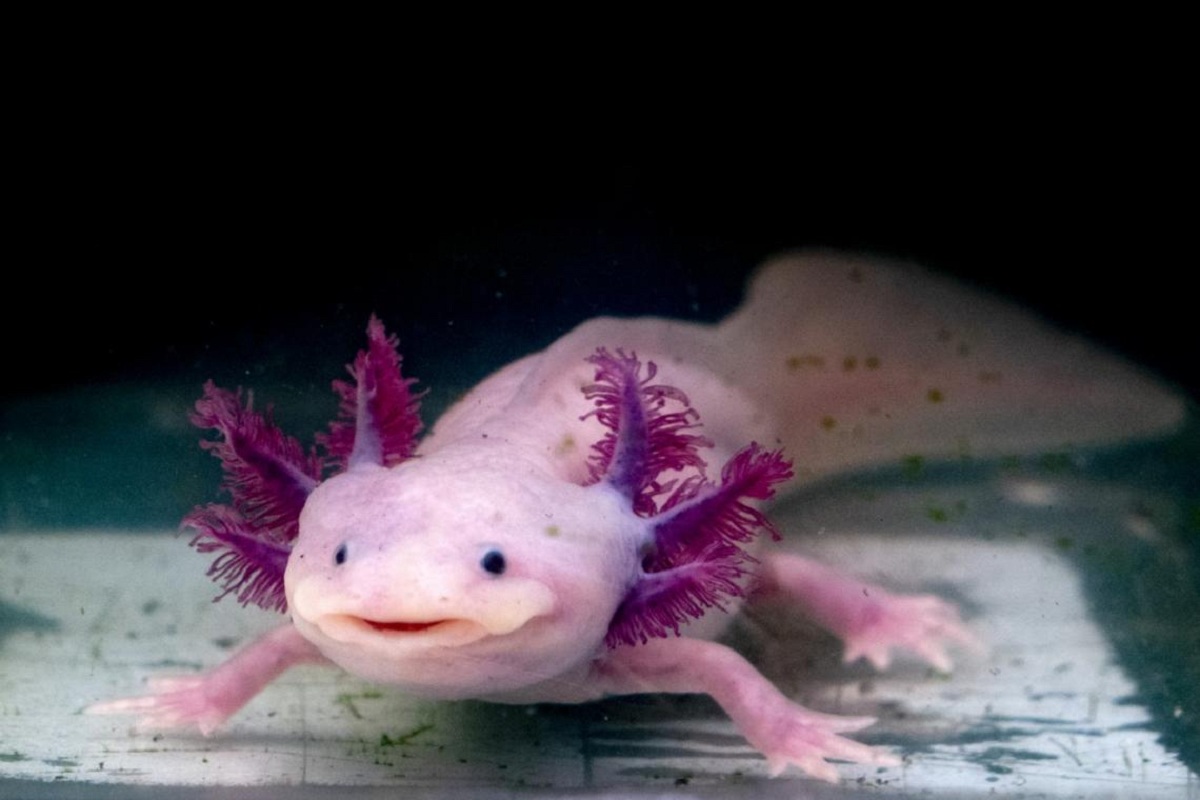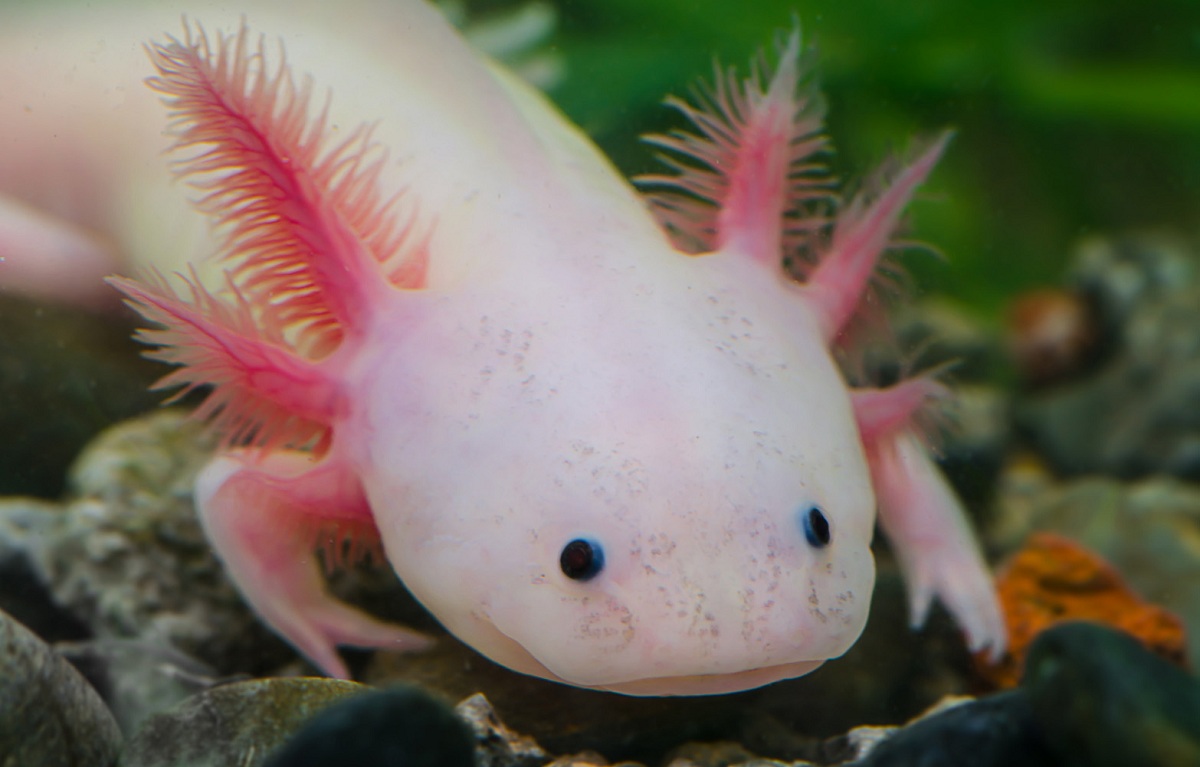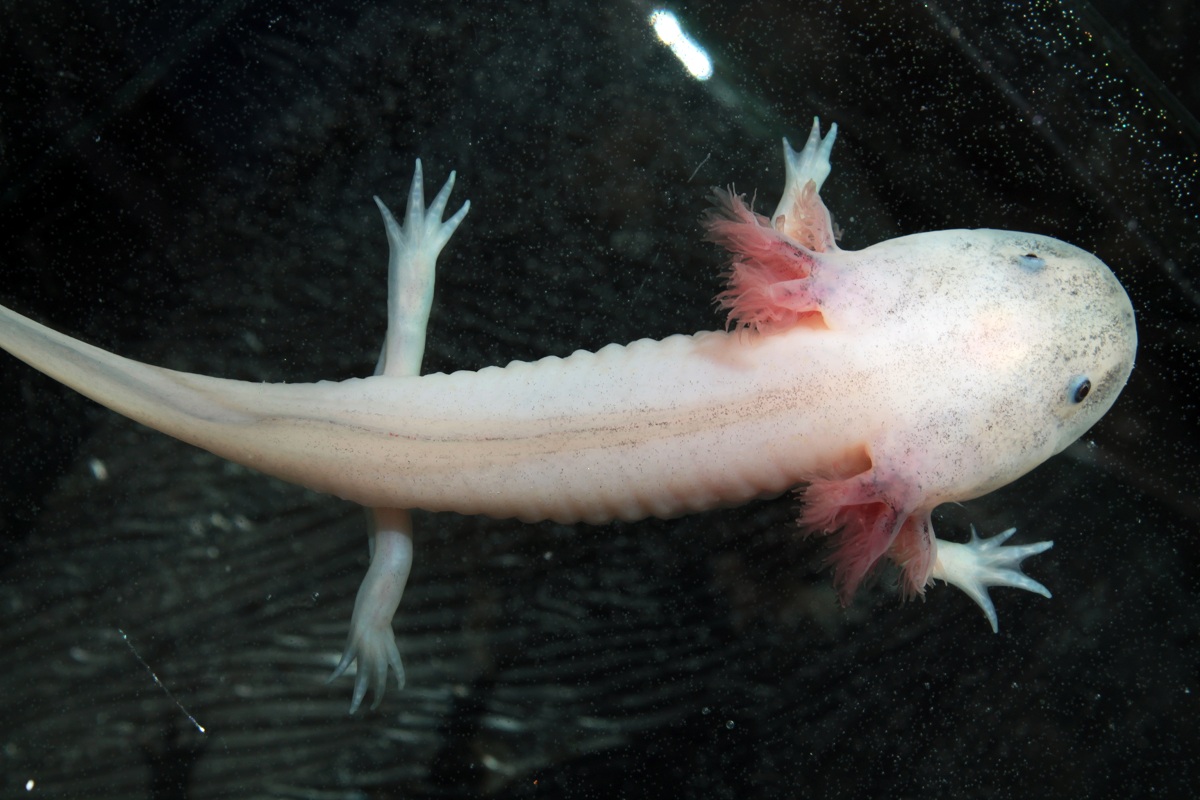
There are numerous animals considered rare in this world. One of the rarest animals is the axolotl. It is an amphibian that was discovered approximately 150 years ago and has characteristics that have never been seen in another species. It comes from the waters of Mexico and has a rather strange physical appearance. The strangest thing about this animal are all its characteristics that make it one of the most curious and interesting animals to study and learn about.
In this article we are going to show you what are the characteristics, habitat, feeding and reproduction of the axolotl.
Key features

This animal has the scientific name of Ambystoma mexicanum and it is in a critical state of danger of extinction. It is one of the animals most likely to disappear shortly. We will see the causes of their threats later.
The main characteristic of this animal and what makes it rarer is that it has the ability to regenerate your limbs, organs and tissues that have been previously amputated. This is one of the most special characteristics that are known of amphibians. Its capacity even extends to vital organs such as the brain and the heart. Scientists are amazed at its great ability to regenerate bones, nerves or tissues in a matter of weeks. What is most surprising is that it does not leave any after-effects from the accident in question.
Among the studies that have surrounded this rare species is one of the most important findings in science. And it is that the axolotl has the largest sequenced genome discovered in all of history. If we compare it with the human genome, we see that its number of genes is at least 100 times greater. It is one of the strangest animals that has a size of approximately 30 centimeters at most, with its average length of 15 centimeters. Usually it weighs between 60 to 230 grams, so it is small.
It is a very rare amphibian that can be compared to a tadpole due to some of its similarities in physical appearance. We easily highlight its small eyes, tail and totally smooth skin. It also has legs and very thin ones. The teeth are small in size and arranged in rows.
The pigmentation of the axolotl is also quite special. And it is that this pigmentation can vary in some specimens depending on the ecosystem where it develops. We can find shades ranging from gray, white, albino, gold, brown and black, among others. In most specimens, a dark brown color prevails.
Description of the axolotl
This animal has three pairs of gills that are shaped like a feather and that arise from the base of its head. They are located at the back. Another of its impressive characteristics is that it is able to preserve its larval appearance until the adult stage. That is, throughout the life of individuals it gives the impression that they still have to develop further. However, it is its final appearance. Although they are fully developed and have become adults and are sexually mature, they still have the larval appearance. They are not considered dangerous animals, quite the opposite. The axolotl has a generally calm demeanor. Its longevity usually extends to 15 years of age. It all depends on the conditions of the environment where it is found and the actions of the human being.
Habitat and area of distribution

This animal is found in freshwater habitats. They differ from other salamanders in that they are able to remain in the water continuously. You can give this animal mine as a fully aquatic animal. They are animals that can live well in captivity, although they need adequate conditions of temperature, water, light and other factors that adapt to the needs at all times.
If the care is correct, they can live in aquariums quite normally. This means that the human being is treating this exotic species and reducing its populations in an unsustainable way. The axolotl's area of distribution extends in the waters of the Valley of Mexico, although at present only Lake Xochimilco is located. This is due to its regression in populations due to different negative activities.
Axolotl feeding
This animal feeds at night, since it must be asleep. To look for their food they use their olfactory sense. Since they have teeth that are too small, this animal cannot chew. Therefore, it cannot crush its prey but has to absorb it. In their diet they usually introduce different foods. In its natural habitat we see that its diet is composed of small fish, crustaceans such as mussels, mollusks, worms, small fry and insect larvae.
When in captivity they are fed earthworms, small pieces of turkey meat, chicken or fish and some worms. A curious fact of feeding these animals is that when they are small they feed every day. However, as they develop and reach adulthood they become animals that they feed between 2 and 4 times a week.
Reproduction of the axolotl

This animal can be kept in its juvenile state throughout its life. This means that even having larval characteristics it can reach sexual maturity. This occurs after 12 to 18 months after birth. From this time the courtship begins. This courtship process begins when the sea catches the female's attention after pushing her tail into her partner's cloaca. A later both dance in circles.
The female lays about 200 to 300 eggs at each clutch. They settle in the vegetation around their habitat and can adhere to rocks. After about 14 days they hatch.
The main predators of the axolotl are some species of fish, among which we find carp and tilapia.
I hope that with this information you can learn more about the axolotl and its characteristics.